5 Antique Singer Sewing Machine Models: Comprehensive Guide
My mom left me an Antique Singer Sewing Machine that I cherish and sew on all the time. Today we are talking all about an old singer sewing machine, their history, the singer sewing machine models from the 1800s to now, and about Mr Singer who had a sketchy background. He was a playboy of his time.
Antique Singer vintage machines are a popular collector’s item among sewing enthusiasts and history buffs alike.
These machines, which were manufactured by the Singer Sewing Machine Company from the mid-1800s to the mid-1900s, are prized for their craftsmanship, durability, and historical significance.
Singer was one of the first companies to mass-produce sewing machines, and their designs revolutionized the textile industry.
One of the most recognizable features you will see on an Antique Singer Sewing Machine is its ornate design. These machines were often decorated with intricate scrollwork, floral patterns, and other embellishments that made them as beautiful as they were functional.
Many collectors are drawn to these machines because of their unique and eye-catching appearance.
In addition to their aesthetic value, Antique Singer Sewing Machines are also valued for their historical significance. These machines played a key role in the Industrial Revolution, and they helped to transform the way that textiles were produced. By making sewing faster and more efficient,
Singer machines made it possible for people to create clothing and other textiles on a larger scale than ever before.
Mr Singer was also an amazing businessman who offered a payment plan for sewing machines, which was unheard of at that time. Today, these machines serve as a reminder of the ingenuity and innovation that drove the Industrial Revolution forward.
History of Singer Sewing Machines

The Singer Company, founded by Isaac Merritt Singer, has a rich history in the sewing machine industry. Isaac Singer, an American inventor and entrepreneur, revolutionized the sewing machine industry with his innovative designs and business strategies.
In 1851, Singer introduced the first practical sewing machine, which was capable of sewing 900 stitches per minute.
This machine was a game-changer and significantly reduced the time and effort required for sewing. The Singer Company grew rapidly, and by the 1880s, it had become the largest sewing machine manufacturer in the world.
During World War I and II, Singer played a crucial role in supplying sewing machines to the military. The company produced specialized machines for sewing uniforms, parachutes, and other military equipment.
Over the years, Singer has continued to innovate and improve its sewing machines, introducing new features such as zigzag stitching, automatic threading, and computerized controls. Today, Singer remains one of the most popular and trusted brands in the sewing machine industry, with a loyal customer base spanning generations.
Antique Singer Sewing Machines
Antique Singer sewing machines are highly valued by collectors and sewing enthusiasts alike. These machines have a rich history and unique characteristics that make them stand out from modern sewing machines. If you’re interested in identifying an antique Singer sewing machine, there are several things to look for.
Singer Turtleback
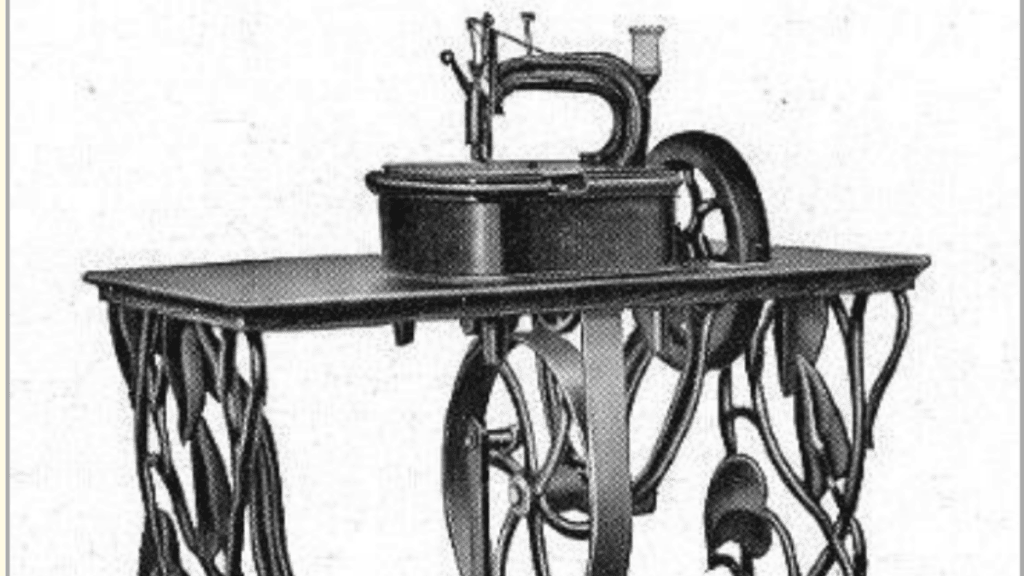
In 1856, Singer achieved a notable breakthrough with the introduction of the Singer Turtleback sewing machine. This marked their pioneering venture into creating a sewing machine tailored specifically for household use. Notably, this model introduced an innovative feature: an iron treadle, enhancing its practicality and user-friendliness.
While the Singer Turtleback had its share of inherent flaws, it remains a coveted item among collectors and sewing machine enthusiasts today. Its enduring appeal is primarily attributed to its rarity and historical significance.
This antique sewing machine serves as a testament to Singer’s early exploration of household sewing machines and holds a special position in the rich history of sewing machine development.
There are very few of these machines around. If you happen to find one of these vintage Singer sewing machine, you can look up the value on the Singer Website.
Singer 12
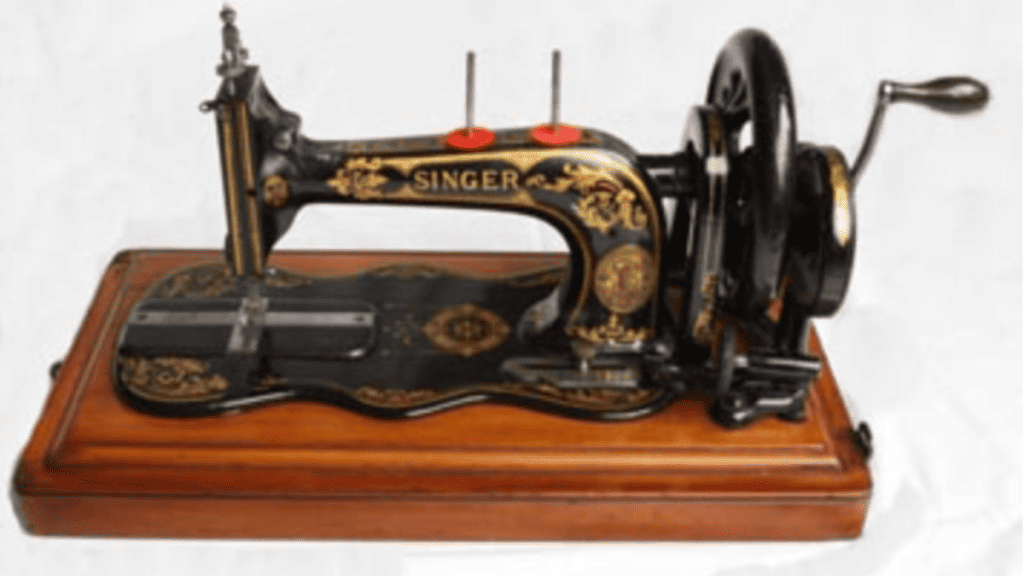
The Singer 12, affectionately dubbed the “Fiddlebase,” stands as a testament to enduring success and remains a cherished antique old sewing machine to this day.
It boasted the distinction of being the inaugural dependable lock stitch sewing machine accessible in the market, effortlessly handling multiple layers of fabric with precision.
In its era, the Singer 12 astounded the world with its innovative features. This model remained in circulation from the conclusion of the Civil War through the dawn of the 20th century.
Its lasting popularity and historical importance render it a prized possession among antique enthusiasts.
Although the Singer 12 model continues to be highly sought-after in the antique community, its accessibility has improved lately owing to the substantial number of units produced over time.
Notably, it’s not uncommon to encounter functional Fiddlebase models at an antique store for a reasonable price, despite their age.
Thanks to their robust metal construction and exceptional design, many of these machines have withstood the test of time, showcasing durability and is still a favorite of antique sewing machines enthusiasts and collectors.
Vintage Singer Sewing Machine Models
During the span of 1900 to 1960, the Singer company produced a wide array of sewing machine models, now categorized as vintage older machines.
These vintage Singer machines are distinguished by their robust metal interiors, sturdy build, and exceptional reliability. If you’ve ever had the pleasure of owning a vintage Singer machine, you’re likely well-acquainted with their reputation for longevity – they just seem to keep on running! While numerous vintage Singer sewing machines are still cherished by sewing enthusiasts, a select few have earned particular acclaim.
Among these, the Singer 221, 401a, and 66 models shine as some of the most renowned vintage Singer machines. They have etched an indelible mark on the sewing community, celebrated for their superior craftsmanship, remarkable performance, and enduring allure.
Their enduring popularity and unwavering admiration from vintage sewing machine collectors and users stand as a testament to the lasting legacy of Singer’s craftsmanship and innovation.
Singer Featherweight
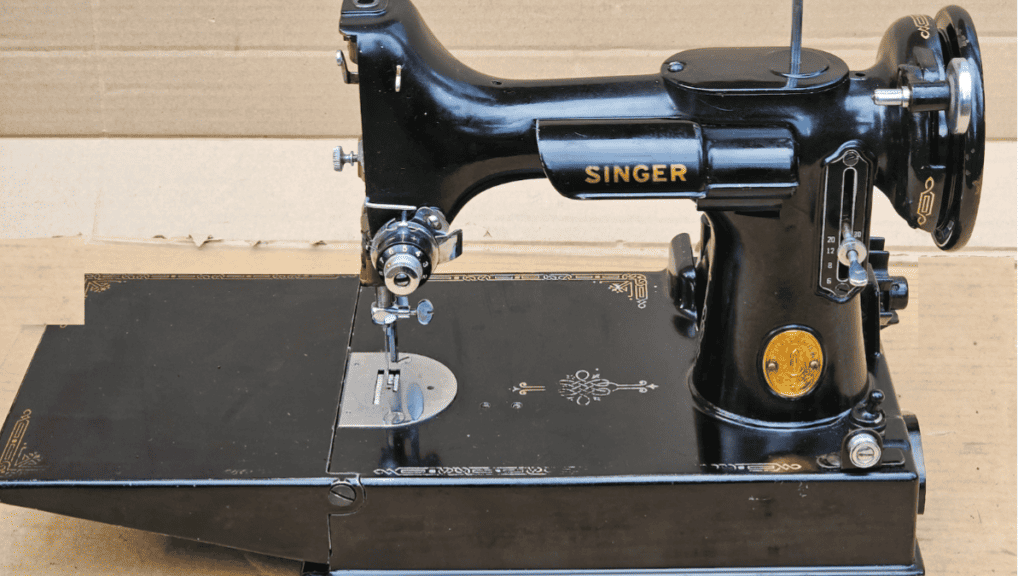
Find Singer Featherweight Machines
In the early 20th century, the Singer Company achieved remarkable success with its iconic sewing machine, the Featherweight. Officially designated as Model 221, the Featherweight garnered worldwide acclaim due to its groundbreaking innovation.
This model departed from the conventional heavy cast steel construction by incorporating lightweight cast aluminum, resulting in a machine that weighed just eleven pounds.
Aside from its lightweight design, the Featherweight boasted several distinctive features. Its hinged and flip-up bed extension allowed for easy access to the bobbin case, enhancing user-friendliness.
Furthermore, the placement of its unique light source set it apart from later models like the Singer 66, giving it a distinctive and easily recognizable appearance.
The Featherweight model made its debut in 1933, during the interwar period. Leveraging this success, Singer subsequently introduced the 222K model, which was produced and marketed from their factory in Scotland.
The 222K remains highly adored even today and has earned the additional moniker of the “Queen of the Singers,” underscoring its lasting popularity and exceptional craftsmanship.
If you happen to stumble upon a Featherweight sewing machine in excellent condition, consider yourself fortunate and hold it dear. This singer model is difficult to find.
These machines, despite their age, often continue to function flawlessly and are in high demand. Quilters, in particular, hold a special affection for these models due to their remarkable ability to effortlessly handle thick fabrics that can challenge modern machines.
Furthermore, the collectible nature of Featherweight sewing machines contributes to their elevated value in today’s market. These treasures command a significant price tag, reflecting their desirability among sewing machine collectors and enthusiasts.
So, if you’re fortunate enough to acquire a Featherweight sewing machine, you not only gain a dependable workhorse but also a cherished piece of sewing history compared to newer machines. Cherish it for its enduring allure, exceptional sewing capabilities, and the joy it brings to quilters and sewing enthusiasts alike.
Singer 401

Shifting our attention to the 1950s, two Singer models that have maintained their enduring popularity are the 401a and 403a. These sewing machines are highly esteemed for their sturdy steel construction and their capability to execute zigzag stitches, which enhances their versatility.
The 401a, famously known as the Slant-O-Matic, distinguishes itself with its unique angled needle design. This innovative feature grants easier access to the needle plate and presser foot, significantly improving the sewing experience.
Furthermore, the 401a incorporates internal discs referred to as cams, which play a pivotal role in redirecting the needle and presser foot, allowing for a wide array of stitch patterns.
The combination of solid steel components, zigzag stitching capabilities, and the distinctive design of the Slant-O-Matic have secured the 401a and 403a models as perpetual favorites among sewing enthusiasts and collectors.
Their enduring appeal is a result of their durability, precision, and stitch versatility, which continue to captivate sewers over the years.
In the realm of vintage sewing machines, the lasting allure of the 401a and 403a models stems primarily from their exceptional durability and reliability.
These machines are as robust as can be and have demonstrated their capacity to withstand the passage of time, ensuring their functionality for generations to come.
Among vintage sewing machine enthusiasts, the 403a often garners accolades as beautiful machines, representing the pinnacle of craftsmanship and design.
Its enduring popularity is attributed to its robust construction, precise performance, and the joy it brings to sewing enthusiasts. The 403a remains in high demand, valued not only for its utility but also for its collectible status.
Owning a 403a is akin to possessing a piece of sewing history, and its charm extends to both practical sewing applications and an appreciation of its vintage character.
For those with an affinity for vintage sewing machines, it would be challenging to find a model superior to the 403a. Its renowned reliability and collectible status ensure that it continues to captivate the affections of sewing enthusiasts and collectors alike.
Singer Sewing Machine (1960-1980)

In the 1960s, Singer faced formidable competition from overseas manufacturers, prompting them to revamp some of their cherished classic models. As a result, sewing machines from this era may not garner as much attention from sewers and collectors in comparison to earlier models.
Nonetheless, there are standout machines from the 1960s that continue to pique interest. The Slant-O-Matic 500 models, with their sleek and space-age aesthetics, are particularly captivating.
These machines, devoid of computerization, typically offer a variety of stitching patterns and maintain a predominantly metal construction with cams and gears housed inside.
Transitioning into the 1970s, some sewing machine models may leave enthusiasts somewhat less enthused. Like many other manufacturers,
Singer started to shift from predominantly metal construction for cams and gears to incorporating more nylon and plastic components during this decade.
Nevertheless, it’s noteworthy that all-metal models from the 1970s do exist, and these machines often continue to operate splendidly even after fifty years.
While models from the 1960s and 1970s may not generate as much enthusiasm as their predecessors, hidden treasures can still be uncovered.
Whether it’s the sleek and futuristic Slant-O-Matic 500 or an all-metal machine from the 1970s, these vintage Singer models can deliver delightful sewing experiences and serve as a testament to the brand’s enduring legacy.
From the 1980s onward, Singer models have primarily incorporated plastic components, which, over time, can deteriorate and cease to function.
Generally, these plastic parts have a lifespan of around five to ten years, with some machines experiencing issues as early as three years, especially with heavy use.
Unfortunately, the modern sewing machine manufacturing trend leans toward prioritizing cost-effectiveness and convenience over long-lasting durability. It’s important to acknowledge that modern sewing machines are not designed with the expectation of lasting indefinitely.
While this might be disappointing for those seeking machines with extended longevity, it reflects the evolving industry standards and the prevailing market demand for affordable and accessible options.
Hence, it becomes essential to assess individual sewing needs, frequency of use, and the desired lifespan when contemplating a sewing machine purchase in the present day.
Singer Sewing Machines (1980-present)
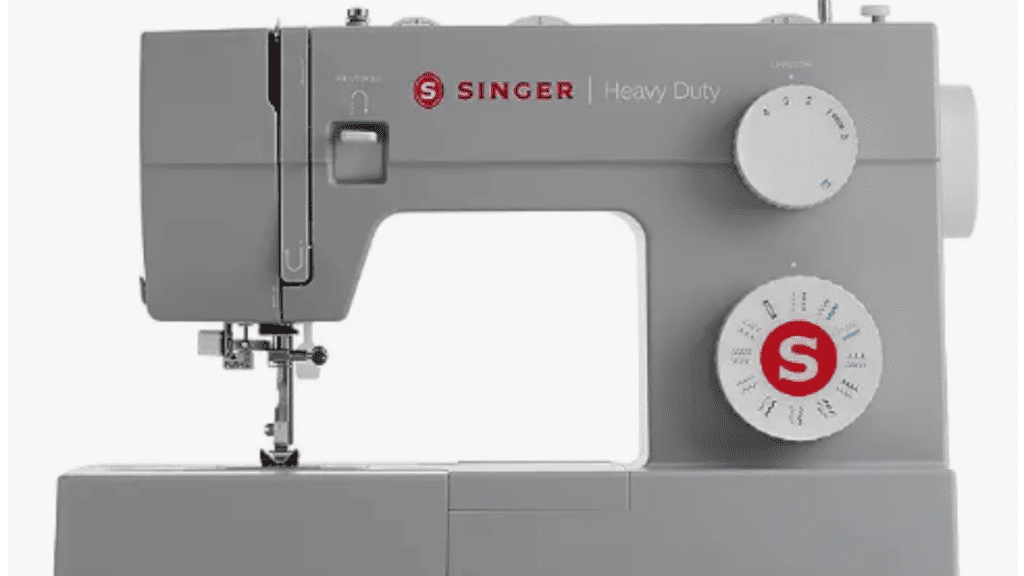
As with any sewing machine purchase, it is advisable to consider one’s skill level, intended usage, and long-term sewing goals when selecting a machine that best aligns with individual needs.
If you engage in sewing for a few hours per week as a recreational activity, Singer models can certainly provide the quality and affordability you require.
Furthermore, they are well-suited to meet the needs of hobbyists and casual sewers. However, if you operate an Etsy business or engage in extensive sewing sessions throughout the day, you may require a machine that can withstand the demands of heavy usage.
For beginners in particular, Singer offers several models that are ideal for getting started. These include the 7363 Confidence Machine, the Start 1304 machine, and the M1500.
These modern machines feature a user-friendly design, offering simplicity and ease of use. Additionally, they provide a wide range of capabilities to accommodate different sewing projects.
Moreover, these models are known for their affordable pricing, making them accessible to those on a budget. It is important to consider your sewing requirements, frequency of use, and long-term goals when choosing a sewing machine.
Singer models can be a reliable choice for hobbyists and beginners, offering the right balance of functionality, user-friendliness, and affordability.
Singer Serial Numbers And Model Numbers
One of the first things to look for when identifying an antique Singer sewing machine is the model and serial number. These numbers can be found on a small plate on the right-hand side of the machine. The model number will tell you the type of machine you have, while the serial number can help you determine the age of your machine.
Singer Sewing Machine Value
Determining the manufacturing year of your Singer sewing machine can be conveniently accomplished by identifying the model of your machine, which is typically engraved on various parts of the machine. If you require assistance in locating the model number, Singer offers helpful guidance on their website.
The model number can generally be found in one of the following areas, depending on the year of manufacture:
1. Below the handwheel
2. On the front panel above the needle
3. Below the stitch length controller
4. On a small metal plate positioned on the front of the machine
Once you’ve identified the model number, you can access valuable information about your Singer sewing machine, including its year of production from the Singer sewing machine company.
After obtaining your Singer sewing machine’s model number, you can effortlessly retrieve pertinent information by entering it into the search bar on Singer’s website. This will enable you to find the specific sewing manual and other valuable resources related to your machine.
Alternatively, if you prefer, you can also conduct a straightforward Google search using the model number to ascertain the manufacturing year of that particular model.
By utilizing these methods, you can swiftly access relevant information and enhance your understanding of your Singer sewing machine. You can also employ the serial number on your machine to determine its manufacturing date.
Singer Sewing Machine Values by Serial Numbers
Every Singer sewing machine is equipped with a unique serial number, distinct from its model number. In some cases, these numbers are located in the same area.
For instance, older machines typically have these numbers engraved on a small metal plate positioned on the front of the machine. On the other hand, newer models tend to place the serial number near the on/off switch or beneath the machine.
The serial number acts as an essential identifier, enabling you to discern the model number, the machine’s year of manufacture, and even its approximate value.
The International Sewing Machine Collectors Society maintains a comprehensive database that encompasses all Singer serial numbers.
By consulting this database, you can ascertain your sewing machine’s age based on its serial number, gaining valuable insights into its historical significance. It’s cool to see your antique Singer sewing machine’s value, although if you are like me, you will never sell yours.
Whether you had one of the vintage models passed down to you or found a rare find at an antique store or at a local market, an antique Singer sewing machine is a reminder of time periods of the past. We hope you loved learning about your Singer sewing machine.
Sewing Supplies
If you have a sewing machine, you need a few supplies to go with them. Here are some of our favorite supplies
Fabric Giveaway
Enter our monthly fabric giveaway. Simply complete the tasks daily and you will be entered into the drawing. Winner will be randomly drawn on the first day of the month and notified via email
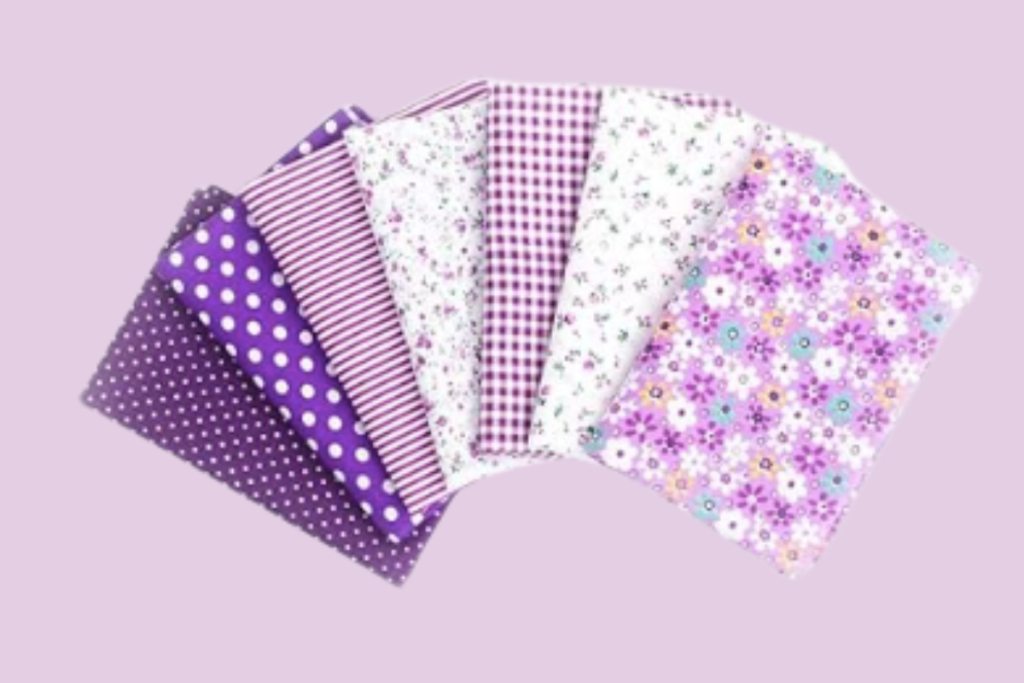

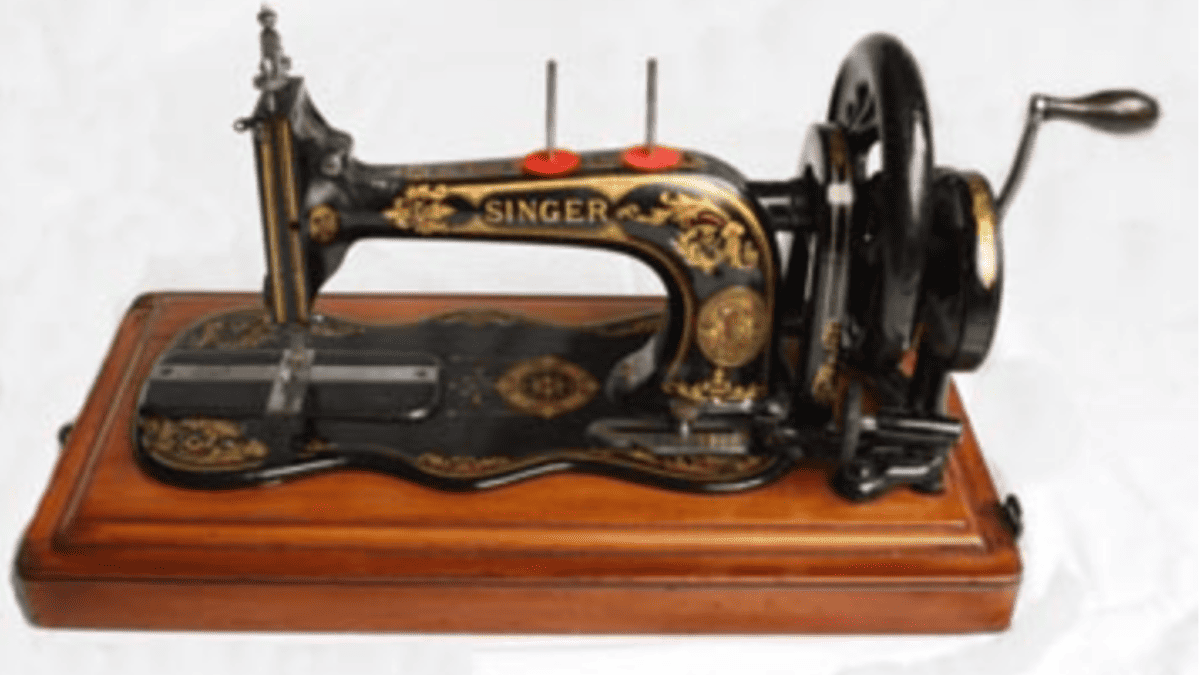
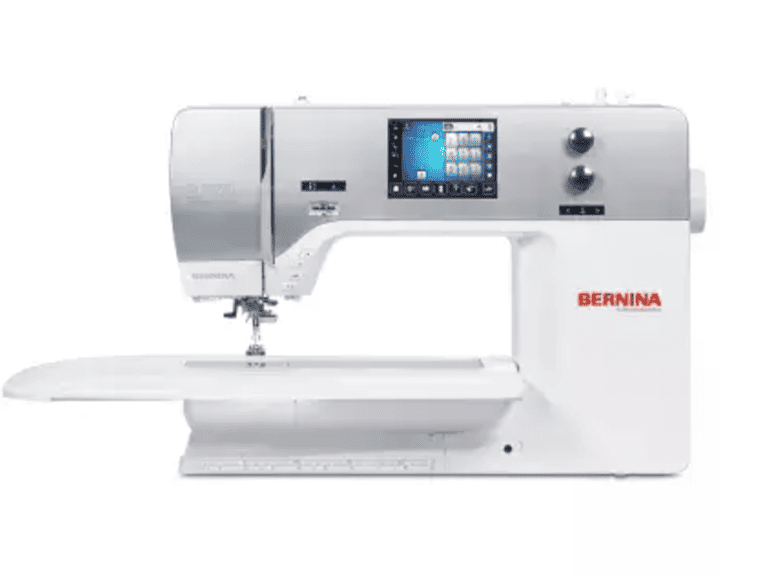
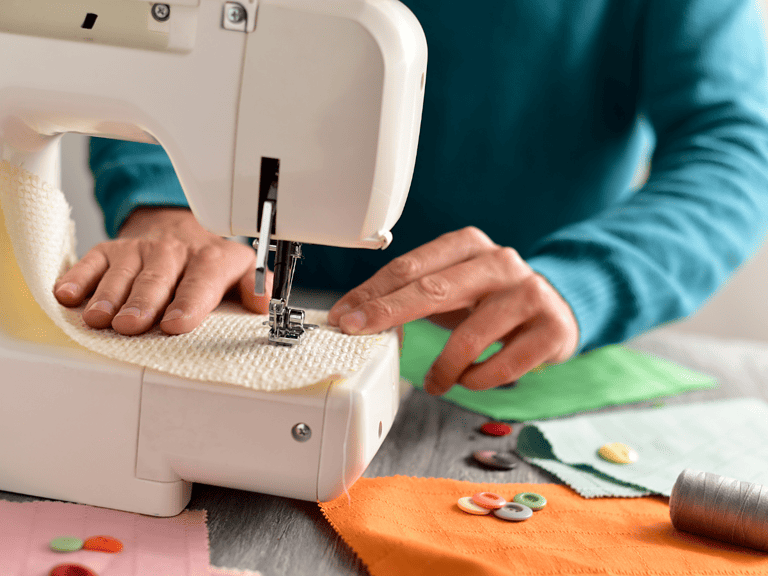
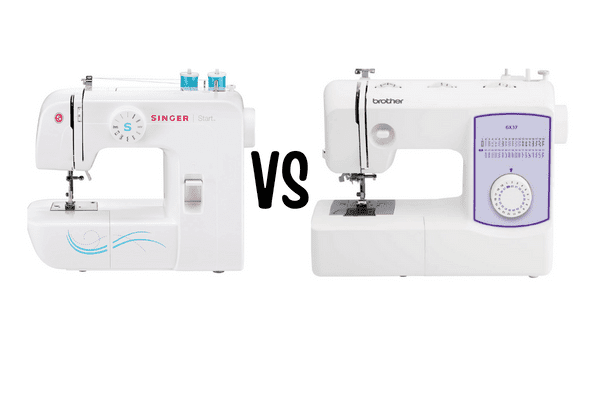
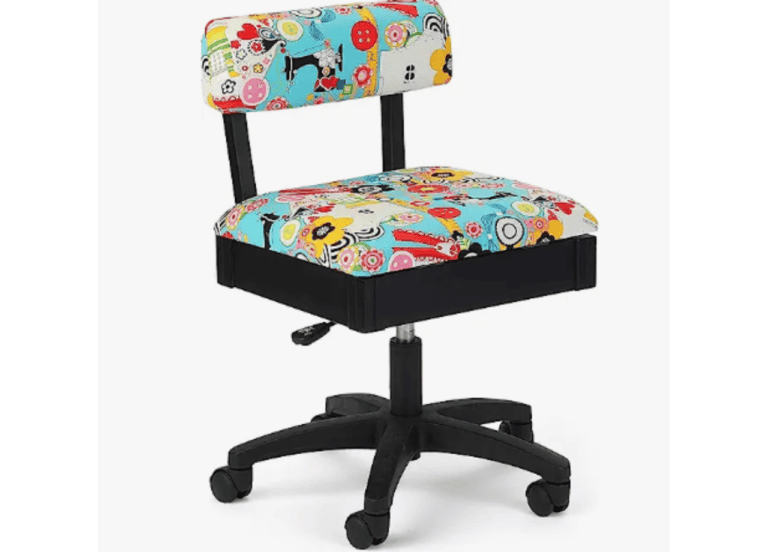
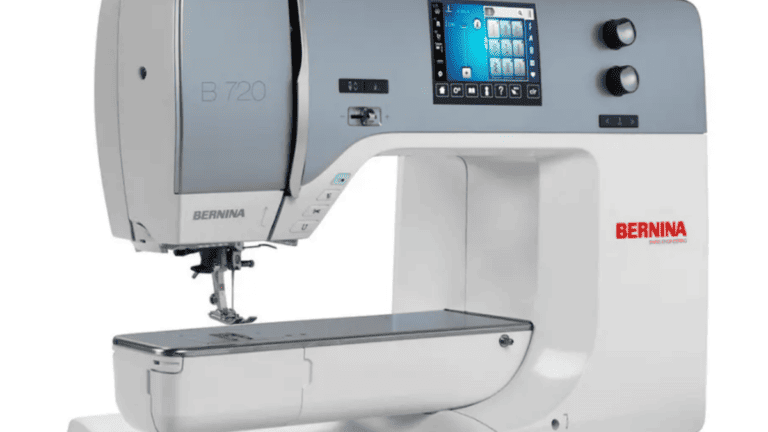
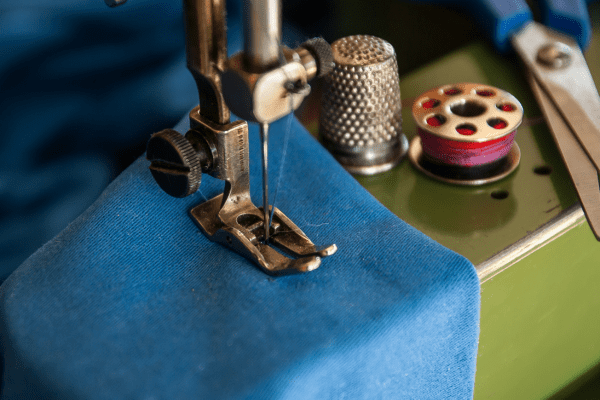
I have an 1892 improved premium no 2 sewing machine Bought new from Foley and Williams Cincinnati Ohio, by my great grandmother I have been trying to find more information on the sewing machine but unable to I do have the book but want to know more. By chance would you know anything about this
No idea. I would check with a quilting guild or quilting shop and see if anyone there would know.